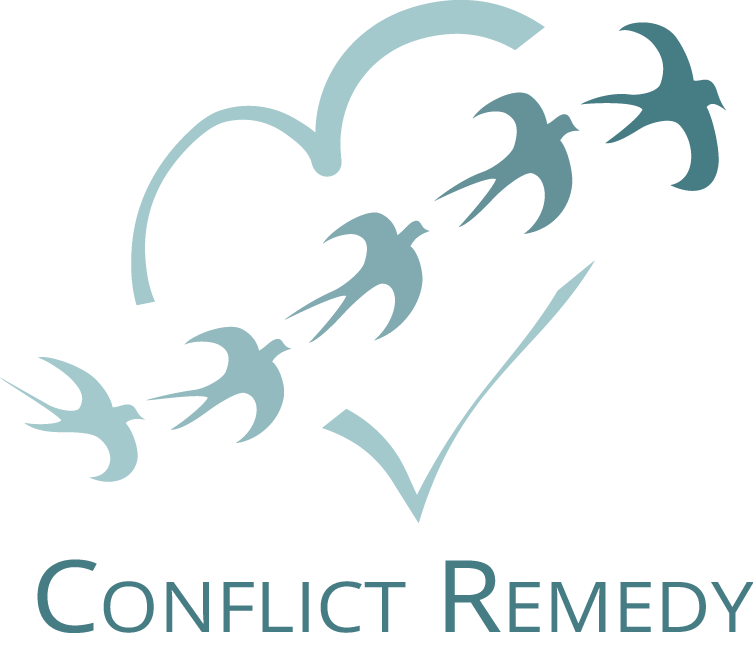How can you have a civil conversation with people you think are absolutely wrong, even evil?
Is it even possible to talk to “impossible” people when you seriously disagree about politics or religion, or when you are angry at workplace differences and seeming injustice?
The answer is yes, it is totally possible to truly talk with people you judge, dislike, or disagree with! But it takes courage, willingness, patience, and practice.
One woman’s miraculous change—from narrow hatred to open-minded empathy
I’ve written in various blog posts and articles about how we can change our thinking and behavior to do this successfully. I recently watched a wonderful TED talk by Megan Phelps-Roper, whose life is an inspiring model of this kind of positive change.
Ms. Phelps-Roper’s transformation from narrow hatred to open minded empathy is heroic, in my opinion. And her advice for how we can make the same changes are absolutely in harmony with important principles of conflict resolution.
Growing up in righteous hate
Phelps-Roper was raised in the infamous Phelps family. You might recognize the name, as these leaders of the Westboro Baptist Church are notorious for their demonization of gay people and immigrants, including picketing their funerals with hateful slogans. She grew up thinking they were doing God’s work, and everyone who disagreed with them was wrong and going to Hell.
Civil conversations changed her mind.
But, over time, her thinking and perspective were transformed, which she credits to conversations she began on Twitter. She began to see that these people, who were very different from her family, and who she initially perceived as the enemy, were willing to listen, to engage in civil Twitter exchanges and to treat her as human, which inspired her to do the same with them.
Eventually her change in thinking meant she had to leave her family, because she couldn’t accept their hate and they could not tolerate her acceptance of differences.
From her own transformation, she has four suggestions for effectively talking to people you believe are wrong or bad.
Megan Phelp’s 4 rules for productively engaging with people who you disagree with:
- Don’t assume bad intent but rather good or neutral intent.
- Ask questions: This signals that the person is being heard, and they also feel safer to ask Qs of you.
- Stay calm—rightness doesn’t justify rudeness. Pause, step away, use a digital buffer for social media exchanges, (she was on Twitter) and then come back. Her Twitter friends didn’t abandon their principles, just their outrage.
- Make the argument—don’t assume the value of your position should be obvious; it isn’t to others. If we want them to change, make the case for it.
These suggestions offer a peaceful path that can be very effective for starting a better conversation. Phelps-Roper ended up marrying one of the people who was willing to start a dialogue with her. I’m not suggesting you go that far, but if you can find a willingness to see all people, even enemies, as worthy of civility, to express disagreement in a respectful and civil way, you are beginning to create an opening for understanding, true communication and a more peaceful, inclusive, and just world.
About Lorraine Segal: As a teacher, trainer, and coach, I am passionately committed to helping people in organizations and companies learn skills to release conflicts and misunderstandings, communicate better, and create a more harmonious and productive workplace. I teach communication and conflict management skills at Sonoma State University and online, and create customized programs for businesses and non profits as well as working with individual managers and employees. For more information about how we might work together, or to request a consult or session, visit ConflictRemedy.com



I just posted this on my website. 🙂
The impact of curiosity and asking questions can never be understated. Answering every question after taking long enough to gauge the impact of the answer models active listening and extends conversations because virtually everyone in the conversation subconsciously mirrors the pace. This addresses rules two through four. let’s look at number one.
Disputes and conflicts are a by-product of what participants bring to the table. Conflict emerges from disputes when one participant senses a power imbalance and seeks to mitigate their own weak position or to exploit their perception of being more powerful. The most important aspect a conflict resolution professional needs to know in power imbalance scenarios is how to convince parties to leave their preconceptions at the door, effectively removing the power imbalance and replacing it with rules two through four.
Great article.
Hi Lorraine,
What an important article! I especially liked the 4 tips for conversing with “the enemy.” I’m sharing this article on my social media sites and hope others do too.
Thank you, Jean Tracy!